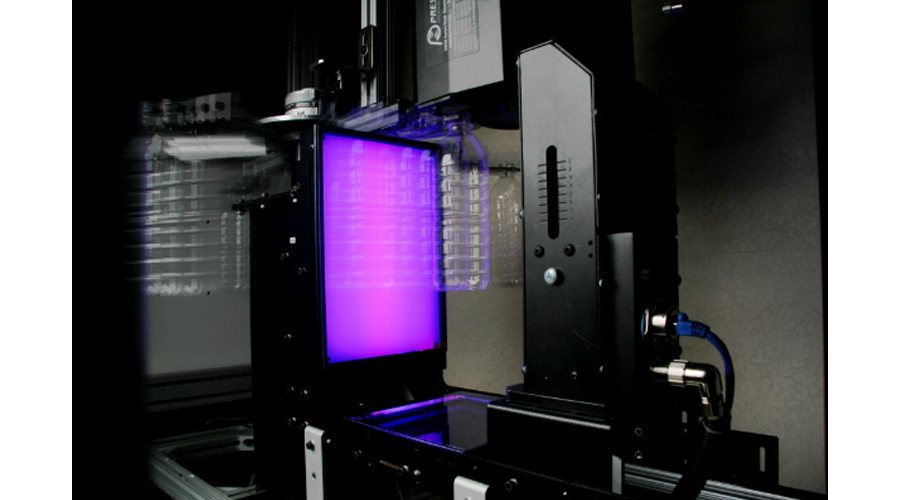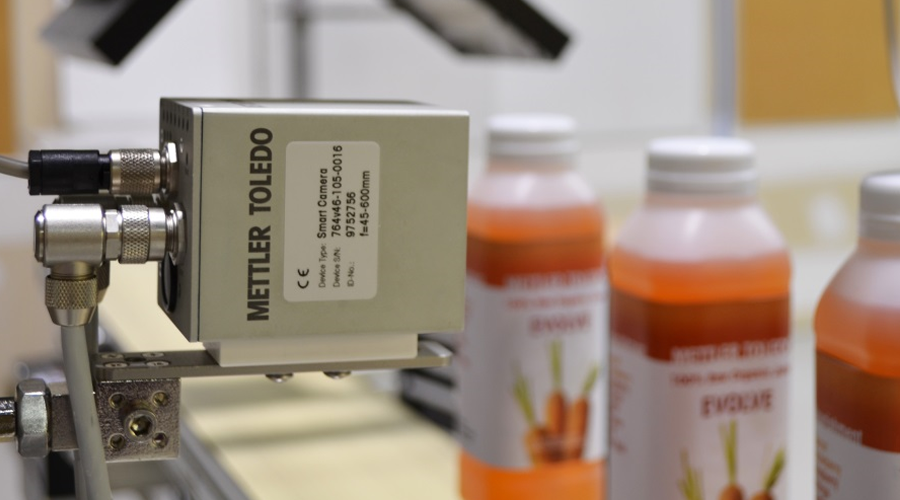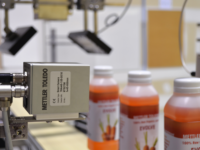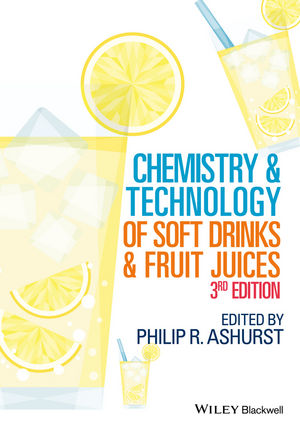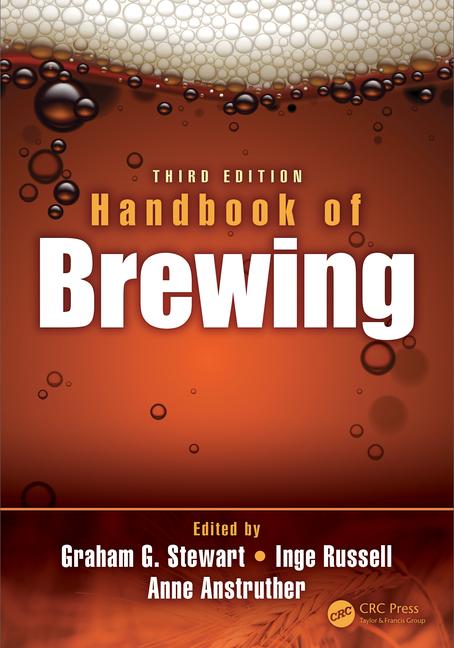Carrying a large magnifying glass, Inspector Jacques Clouseau, memorably played by comedian Peter Sellers in the famed “Pink Panther” series, was an inept French police detective searching for clues. Although Inspector Clouseau was not inspecting products in a beverage manufacturing plant, inspection equipment requires meticulous attention to detail to ensure safe production for all finished products.
Packaging experts note that advancements in optical technology, software algorithms that are effective at high line speeds and the ability to inspect materials across the bottling process are essential for today’s modern bottling facilities.
Because more SKUs are being processed in lighter-weight bottles and with newer formats such as small-packet flexible pouches, which are quickly growing in demand, inspection equipment must be able to keep pace, they add.
“Higher line speeds, lighter-weight bottles/closures, the increased use of (post-consumer reground) [PCR] material and closely coupled blow-fill lines are four main trends that are impacting bottle inspection,” says Michael Coy, marketing manager at Pressco Technology Inc., Cleveland. “Any one of these individually is significant, and two or more in the same installation can put severe demands on even the most capable inspection systems.”
To keep up with these demands, Pressco Technology has designed a portfolio of solutions to aid beverage production lines.
“Our inspection systems provide detailed, real-time defect-correlation data that pinpoints problems with specific machine parts (such as blow molder spindles/molds/transfer arms as well as filler valves and capping heads),” Coy explains. “With distributed inspection you get the defective component out of the product stream before completing the next value-added operation. For example, rejecting a cap that costs less than a penny may prevent rejecting a filled-and-capped bottle that could cost ten-times as much.”
INSPECTING POUCHES
Although aluminum cans and plastic bottles continue to dominate the packaging industry, formats like pouches are resonating because of their convenience and portion-control capabilities, according to Oliver Wyrsch, general manager at Mettler Toledo CI-Vision, Aurora, Ill.
“Smaller package formats mean faster line speeds to meet the same volume of production,” he says. “Inspection equipment must both keep up and be able to account for greater product variation running on the same production line.”
Pembroke, Mass.-based FT System North America’s General Manager Richard Reardon notes that advancements in the production process are impacting inspection equipment, adding that the production process often dictates inspection requirements.
“Processes like hot-fill nitro, high-pressure processing and aseptic filling are becoming more common,” he explains. “How containers are inspected, what they are inspected for and how the processes are tracked are all factors that impact the inspection equipment.”
FT System offers a broad range of inspection equipment for beverage lines, including laser absorption spectroscopy for leak and pressure inspection — one of the more advanced technological developments in beverage packaging inspection, according to Reardon.
“The technology sounds complicated, but basically these systems will detect vacuum in hot-filled applications or pressure in LN2 dosed or carbonated applications simply by passing the container through the laser beam,” he says. “There is no contact with the container, no wear-parts. … These cost-effective systems have a small footprint and will inspect 100 percent of the containers at full production speeds.”
With as many as four to five camera systems, FT System’s sensor-based systems inspect caps and bottles before they reach the filler/capper as well as preforms on PET lines to ensure correct fill level, proper closure application, label inspection and full-case inspection. These procedures ensure all the containers are in the case without damage to the product, the company says.
MORE MODALITIES TO MEASURE
To keep pace with faster, more efficient production lines, inspection equipment has gotten more sophisticated as well, featuring a wide variety of modalities, including sensors that examine for leaks, pressure, fill level, vision for code and cap inspection, experts note.
Yet, inspection scalability and flexibility remains paramount, particularly because eco-friendly packaging options, innovative bottle shapes and light-weighting have increased demands on the packaging industry and its inspection equipment, according to North Falmouth, Mass.-based Teledyne Tap-Tone.
The company offers twin-proximity inspection designed to address the adoption of EZ-O bi-metal cans. It also performs stand-up pouch inspection for seam and fitment closure defects, it says. The company notes that the proliferation of flexible pouches and detecting leakage was the catalyst for the company’s October 2015 launch of its PRO Series Dual Sensor Compression – Twin Belt pouch inspection system, which inspects pouches for defects in the seals or fitment closures and rejects those that fail.
“The patented Twin Belt conveyor set is designed to compress the head space of the pouch, which allows a sensor to take a comparative measurement of both the infeed and discharge of the system,” Product Line Manager Michael Mierjeski explains.
New vision-inspection solutions also are being developed. For example, Mettler Toledo CI-Vision unveiled a new V2622 Flex-Lite Vision Solution for label and package inspection that enables manufacturers to inspect labels for barcodes, allergy information, expiration dates, and lot and batch numbers. Packaging integrity, including the presence and proper placement of labels, caps and other packaging elements, also is inspected, it adds.
“At the heart of the V2622 are smart cameras with unique resolution, lenses and lighting for different inspection,” Wyrsch explains. “Cameras utilizing liquid lenses automatically change focus within fractions of a second … [while] our CIV-Core software easily manages many vision-inspection needs.”
SAFETY FIRST
Mettler Toledo CI-Vision also offers a R50G X-ray inspection system that detects contaminants in products that are packaged in glass containers, which previously were a challenge because of the containers’ thicker base. Because the thicker base absorbs more X-rays than thinner walls it masks foreign substances, it says.
However, the R50G system incorporates an angled X-ray beam that shoots through the base, maximizing detection sensitivity without sacrificing speed, it adds. The R50G system allows containers to run without gaps at high throughputs as fast as 1,200 containers a minute, it adds.
Pressco’s Coy notes that effective software algorithms are an absolute must for today’s high-volume production lines. “The software must go hand-in-hand with an interface that is very user-friendly, as it is becoming far more common for today’s modern bottling facilities to operate with fewer skilled staff,” he says.
Safety and quality control also are key drivers of inspection equipment. “We are seeing an increase in the requirement to inspect containers and closures before filling and sealing to ensure quality and accountability,” FT System’s Reardon says. “We have a fully automated, in-line quality control system (QCS120) that will inspect the container volume, closure torque and even CO2 content, [and] then return the bottle back onto the production line.” BI
